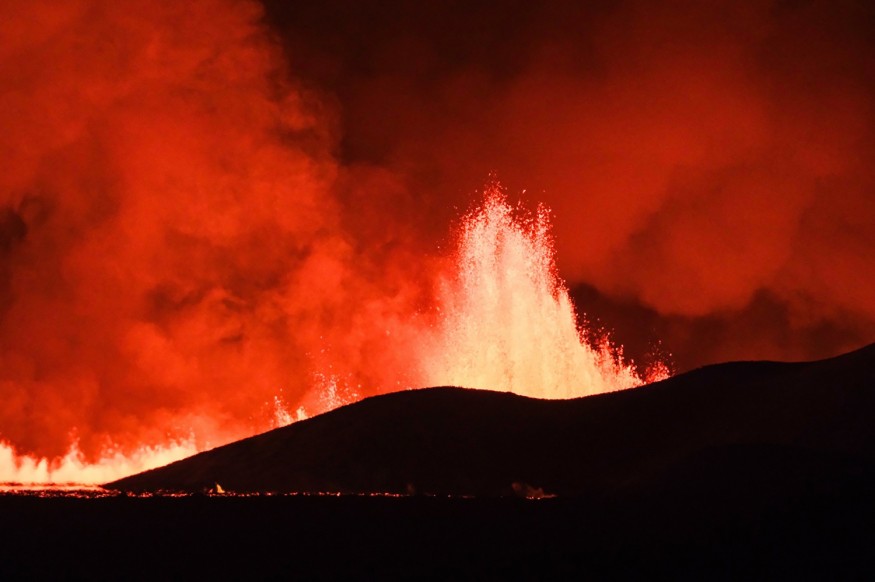On Dec. 18, an Iceland volcano erupted on the Reykjanes Peninsula, near Grindavík, after weeks of seismic activity. The eruption began around 10 p.m. local time and was followed by the evacuation of the nearby town. The dramatic eruption, visible from miles around, lit up the night sky with bursts of lava and smoke.

Iceland Volcano Eruption Causes Evacuation and Stunning Night Skies
An Iceland volcano erupted dramatically on the Reykjanes Peninsula near Grindavík, forcing an evacuation. The eruption began around 10 p.m. on Dec. 18 after seismic activity and an earlier earthquake. This event, captured by Iceland's Coast Guard, showed lava and smoke filling the sky.
The Icelandic Meteorological Office confirmed the eruption's location near Hagafell, approximately 2 miles north of Grindavík. According to CNN, the fissure, which is 15 kilometers long, was formed underground last month. Magma from a 4-kilometer fracture caused Monday's eruption, making it the fourth and largest eruption in the area since 2021.
Despite this, the Icelandic government stated that the eruption posed no immediate threat to life. However, the area around the eruption was closed to traffic, and people were warned not to approach.
Read Also: East Coast Storm Unleashes Fury: High Winds, Flash Flooding, Power Outages Across Northeast
The evacuation of Grindavík, a town of over 3,000 people, occurred as the Iceland volcano began erupting. The town, known for its proximity to the Blue Lagoon geothermal spa, is now clear of residents. The Blue Lagoon had closed last month due to initial eruption signs but reopened just before the latest eruption, only to close again.
As per the report, experts do not expect this Iceland volcano eruption to cause the chaos seen in 2010 with the Eyjafjallajökull volcano, as it does not involve glacial ice that could lead to a wide ash dispersal.
Flights to and from Iceland remain unaffected, and international flight corridors are open. Icelandair reassured that their flight schedule remains unchanged. Meanwhile, authorities had prepared a protective trench around a nearby geothermal power plant to protect the local community's electricity and heating supply.
Iceland Volcano Eruption Unlikely to Disrupt Air Travel
The recent eruption of an Iceland volcano is not expected to affect air travel significantly, in contrast to the 2010 incident. The 2010 eruption under a glacier caused extensive disruption due to ash spreading across Western Europe. This time, the situation is different.
BBC News reported that Professor Matthew Watson from the University of Bristol explained that the current eruption is less likely to produce the ash that previously grounded planes. In 2010, the interaction of water with molten rock under a glacier led to a powerful explosive reaction, sending ash and glassy particles into the atmosphere. These particles posed a risk to jet engines. The jet stream further spread the ash cloud, impacting air travel across Western Europe.
However, the Iceland volcano erupting on the Reykjanes peninsula presents different conditions. Dr. Sam Mitchell, a volcanologist at Bristol University, assured that the current eruption is not explosive like in 2010. This reduces concerns about widespread airspace disruption in Europe. He did note that volcanic fumes might cause discomfort, especially for those with respiratory issues.
Dr. Matt Genge from Imperial College London highlighted the unpredictable nature of the Reykjanes eruption. The eruption rate is high, and the lava is hot and fluid, making it very mobile and dangerous. The potential impact on local attractions like the Blue Lagoon and the town of Grindavik depends largely on the topography, as lava flows downhill until it cools and stops.
Related Article : Solar Storms May Lead to Train Accidents in the UK, New Study Reveals
This article is copyrighted by Travelers Today, the travel news leader




